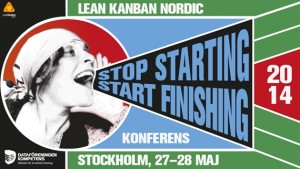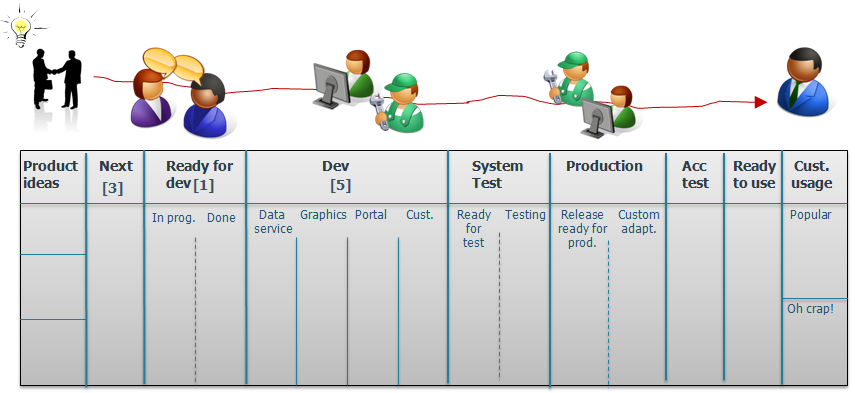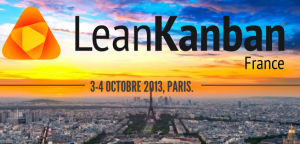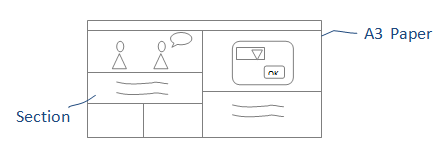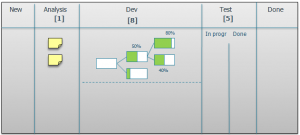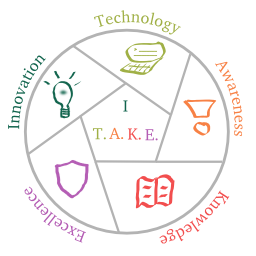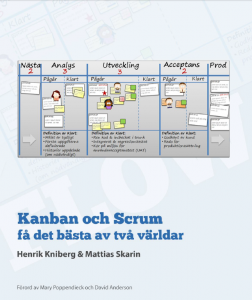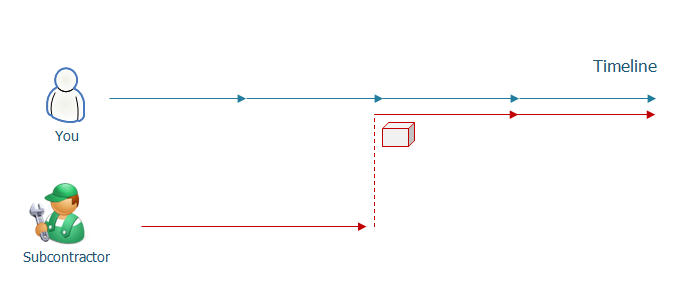Crisp’s Youtube channel has made a new release – introducing Concepts. Concepts is used to let passionate people run with ideas, a different approach than that of traditional product ownership. If you do use in conjunction with a product owner, it allows that person to spend more time on the field with customers. Ps: The
Continue readingMattias Skarin
Vad du inte visste om LOU – Lagen om offentlig upphandling
(this post will be in Swedish since it is a response to Swedish legislation describing how to sell and buy software. If you still are interested, Google Translate is your best friend 🙂
LOU – Lagen om offentlig upphandling är fröet till många katastrofer för statliga och kommunala mjukvaruprojekt. Tänkt som ett verktyg för att hushålla väl med statliga medel, genom att konkurrensutsätta erbjudanden bidrar LOU tyvärr till att skapa dåliga förutsättningar för att lyckas med mjukvara.
Det knasiga med LOU är de felaktiga incitamenten: Om vi antar att de funktioner som är användbara är relativt okända i ett tidigt stadium av projektet så är default practice vid användandet av LOU att funktionerna skall specas i början och sedan skall billigast leverantör väljas. Det vanligaste sättet att jämföra leverantörer är att skapa en lång lista av den sammanlagda funktionaliten i deras produkter och sedan låta dem bjuda på minsta kostnad. Inte oväntat kommer vinnande leverantör efter kontraktet’s inskrivande att snabbt flytta på senior kompetens ur projektet till fördel för junior och vips befinner både kunden och leverantören i en långsam dödsdans där kundens användare blir förlorarna.
LOU innehåller dock ett antal möjligheter som du som upphandlare kan nyttja smart.
Slicing cheatsheet
One of the key challenges for any organization moving to a Lean flow is learning to slice bigger things to small. If you practice this long enough this becomes second nature and you stop thinking about how you do it. The good news is this skill can be taught and to show the dimensions available
Continue readingSlides from Stop Starting Lean Kanban Nordic 2014
Had a great day at Stop Starting Start Finishing – Lean Kanban Nordic. It is cool to see how far companies have come in applying Lean in software, especially experimenting with how to tie together the full value chain. Saku Tuominen really challenged us to think make innovation actionable and not put it into a
Continue readingA good decision process
A fundamental component for fluid operations is an organization’s ability to solve problems and make decisions. Any change or transformation cannot move faster than it’s ability to make decisions and communicate these. This is key if we realize that living with changes is the future status quo of operations.
Many years ago when I was still at University I got to meat a leader at production facility at Volvo, he asked us,
“How long time does it take from when the management team has made a decision and a worker on the shop floor grasps what this means?”
“Three years”.
Without a doubt, this is way to slow for product development and software. But it puts a finger on the starting point for a normal, traditional company, before any lean or agile transformation begins. So, in order to succeed with a transformation that will challenge existing (often plan based structures) we need a better decision & communication process.
Slides from Mix-IT
Just back from Mix IT in Lyon. A bit rare to visit a French conference so was cool to meet people from the French community and see what they are up to. Some reflections: Saw a cool presentation on Prioritizing portfolios using Cost of Delay by Özlem Yüce. No doubt mr Don had an idea
Continue readingThe lean conference of the year – Stop Starting 2014
This years Lean Kanban Nordic conference will be something extra. The focus in on improving the full value chain, from concept to cash. You will get an unique opportunities to listen and discuss with practitioners sharing their experience of how they have improved their companies using Lean thinking. For example, learn:
Why you are better off using a developer than a lawyer when purchasing software
The use of traditional contracts when purchasing software carry a flawed assumption – thinking the contract is the right mean to regulate risk.
The insight is key risks are : skill of the provider, the maturity of the client (yes you!) and ability to communicate honestly during the project. Few of these are effectively regulated using traditional contracts focusing on features, time and money.
Which are the key risks when purchasing software?
- Lack of provider skill
- Lack of customer maturity
- Lack of ability to utilize late learning
- A one time shot to get any IT updates in my environment
- I win, you loose approach – no shared economic incentive
- Lack of communication, during execution
Coaching questions for a kanban team
Kanban is easy to set up, maintaining and improving is harder! When I visit a kanban team, I use these questions to check they know what they are doing. They are helpful since they are not tool focused, rather verifies that there is a tactic being used. After each question I add “please show it
Continue readingCatch 22 – The egoless, present and curious leader
Every successful implementation of Lean or Agile I have seen has an ingredient that is almost a contradiction. A leader who has low ego (not interested in putting himself first) is present (he/she has active conversations with teams and other leaders such, as change never comes as a complete surprise) is active (he takes part
Continue readingFörbättra från start till mål
I denna video berättar jag om vikten av att se till end-to-end ledtid och att den största förbättringspotentialen hos en organisation med Agila team ofta ligger i stegen innan utveckling påbörjas. (for english readers: In this video I tell about the importance of improving end-to-end lead time – not only think about the development portion
Continue readingVideo from “Improving the full value chain using Lean” @ LKCE 2013
I had the privilege of both attending and speaking at Lean Kanban Central Europe (LKCE) in 2013. (Awesome conference). In my talk I share insights and techniques useful when improving the full value chain, across functions in a software product organization.
Here’s a video on my talk.
Learning to communicate requirements, even Agile, the human way
Our human brain is way better interpreting visual information (images) than any other information. Evolution taught us to survive this way. Yet, still today, the most common form to deliver requirements is … text. In the old waterfall days it meant a lot of text, today using Agile slightly less text, but still, text. If we do it well we back it up with a conversation.
Let’s look at an Agile example, using the “As a..” syntax:
“As a buyer, I would like to buy a pair of shorts, so I can go running.”
Function team vs. feature team – a definition
I got the question “explain the difference between a feature team and a function team”. When I answered, I realized that many people uses the term without attaching an explaining what they mean. So here is how I define it.
The worlds fastest CI
Viaplay broadcasts TV over the web and to wireless devices. No need to wait for another build.. they have the worlds fastest CI! Let me share with you how it works! 1. State normal – everything works We can code along or have another coffee. 2. Big trouble! Mainline is clearly broken! All hands on
Continue readingEnterprise kanban – improving the full value chain using Lean thinking
What happens when we apply kanban across the full value chain? What if you are a traditional company, how far can you improve before organizational structures becomes your key constraint? Can you make great products in a multi team scenario without product owners and project managers? Let me share with you our learning of applying
Continue readingPodcast: Improving interactions through the Lean value chain
I just got interviewed by Joseph Dager at Business901 before the upcoming Lean Kanban Central Europe Conference in Hamburg. You’ll find the podcast here (includes downloadable as mp3 and available through Itunes) See you in Hamburg!
Continue readingSlides from Lean & Kanban Netherlands 2013
It’s a busy week! But could not resist beautiful Utrecht region and Lean Kanban Netherlands with focus “Modern management methods”. Here are my slides from the A3 Workshop, where my goal was to let the participants experience some of the upsides and downsides of using A3 in problem solving knowledge work (hint: you will need
Continue readingSlides from Agile Eastern Europe 2013
Met a great crowd in Kiev at Agile Eastern Europe. I’d love to stay longer! Here are the slides on my presentation on Visualization – what’s my brain got to do with it.
Continue readingSlides from Lean Kanban France 2013
Just back from Paris (gotta love that town, many good memories there 🙂 I did my first presentation on Concepts. Here are the slides. /Mattias
Continue readingCrisp for breakfast?
What’s this? An alien invasion? A publicity stunt? A way of sneaking Crisp into your cereals? You make the call. We Go Lean at breakfast, lunch and dinner! 🙂 This picture was forwarded by Troy Magennis, a Monte Carlo pioneer. PS: Troy is coming to Stockholm to show us how to use Monte Carlo to
Continue readingSlides from Dare – “Visualization, what’s my brain got to do with it?”
Just got back from DARE conference in Belgium. I don’t know how Maarten makes it happen, but I always leave with more ideas than I had when I came. I ran a session on visualization – highlighting our brains limited capacity capture and record knowledge (and what to think of when using visualization). An amazingly
Continue readingIntroducing Concepts
Let me introduce a tool I’ve found useful – Concepts. Concepts is a one page specification, in A3 format that represents a product idea of feature. It is enough to enable a prepared conversation with the engineers developing the product. Think of it as a “flexible minimum specification”. The idea The concept owner is a
Continue reading10 Kanban board and their context – updated!
Added a visualization combining architecture with progress follow up for more complex product development scenarios. You’ll find the complete collection of boards here! Cheers Mattias
Continue readingSources of bug list misuse
Bug lists have the potential to consume a lot of your organizations effort. Bugs drive re prioritization, dispatching, reporting, followup – even though they might be of one time nature and random occurrence. Whenever I encounter a huge bug list is to I ask which of these the organization will fix the upcoming release and
Continue readingBy code thou shall present! ITAKE
Can you run a conference where every presenter has to present using code? Why not! Meet ITAKE (Bucharest, ay 30-31). A coders delight. Our friends in Eastern Europe, Mozaic are trying out a new conference format where each presenter has to present using code. Gotta love initatives like that 🙂
Continue readingKanban and Scrum – now in Swedish translation
Kanban and Scrum book is now available in Swedish translation, you can download from InfoQ here Thanks to Johan Natt och Dag!
Continue readingAddressing critical in deliveries from subcontractors
In software, one of our favorite tool to deal with uncertainty is iterations. But is it always the better option?
The last week I’ve got the question two times of how to address critical in deliveries from subcontractors. For example: hardware, preparation of land, machinery, buildings or third party platform updates. How can these be addressed? Do iterations hold the answer? Are there better options?
Let me introduce lean flow thinking and show how it can be used to improve the outcome of critical third party in deliveries in your projects.
Facilitating a future vision @ Crisp
Every organization needs to find it’s path, where to go next. Or it can choose just go “wherever” 🙂 But let’s imagine your want to grasp the state of your hope, dreams and future of your creative people to understand what opportunities to grasp and which to let go of. Let’s imagine you need to do that among a group of self going free radicals, working in different places that does not regularly meet. Wait- that sounds like Crisp 🙂 Let me share how we grasped our future vision.
Vad innebär agila kontrakt? – slides från Meridiumdagen
Sammanfattar i min presentation från Meridiumdagen ett antal Agila kontrakt som är i bruk idag och vad man bör tänka på när man använder dem. —————— For the English reader: What does Agile contracts really mean? – I walk through a number of real contracts that are in use today (presentation was given in
Continue reading




